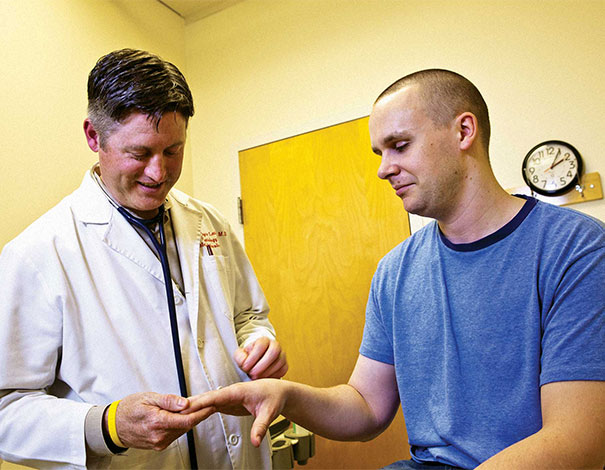Chronic GVHD is a serious side effect of transplant that can range from mild to severe. It usually develops 3-6 months after transplant, but signs can appear earlier or later.
Chronic GVHD happens because of differences between the donated cells (the graft) and your body’s cells (you are the host). Your new immune system from your donor might see your body’s cells as different and attack them.
If you get chronic GVHD, there are treatment options. Getting treatment early may prevent more serious and long-term complications.
Having a little chronic GVHD isn’t always bad. If your transplant was for a blood cancer, your doctor may see mild chronic GVHD as a sign that the donor’s immune system is working to destroy any remaining cancer cells.
Know the symptoms of chronic GVHD and tell your doctor right away if you have any of them.
Chronic GVHD early warning signs
Not everyone experiences all of these warning signs, but many transplant recipients experience some of them.
Digestive system
- Nausea or vomiting (throwing up)
- Diarrhea
- Stomach pain or cramping
Eyes
- Dry eyes
- Irritation that doesn’t go away
- Blurred vision
- Teary eyes
Genitals
- Irritation or dryness
- Rash
- Painful intercourse
Joints and muscles
- Arthritis-like symptoms (pain and stiffness)
- Muscle pain, cramps or weakness
Lungs
- Cough that doesn’t go away
- Shortness of breath
- Trouble breathing Mouth
- Trouble opening your mouth
- Sores
- Irritation that doesn’t go away
- Chapped lips
- Pain
Skin and nails
- Skin texture changes (thickening)
- Nail changes
- Rash
- Unusual hair loss or thinning
- Itchy skin
Lower your risk of chronic GVHD
Most people who had an allogeneic transplant will experience some symptoms of chronic GVHD. There are some steps you can take to help lower your risk.
1. Take your medicines. Your doctor will prescribe medicine to help prevent chronic GVHD. Keep taking that medicine as directed, even if you’re feeling healthy. Call your doctor if you can’t take the medicine for any reason.
2. Protect yourself from the sun. Exposing yourself to the sun’s ultraviolet (UV) rays increases your risk of developing chronic GVHD. To limit your exposure to the sun:
- Avoid the sun as much as possible.
- Wear a hat, sunglasses, long sleeve shirts and long pants when you go out.
- Apply SPF 50 or higher sunscreen on any skin that’s not covered. You can also wear SPF clothes.
Don’t forget, even on a cool, cloudy day the sun is just as harmful as on a hot, sunny day.
3. Watch for early warning signs and take action. Do not ignore the early warning signs of chronic GVHD. Many of the early warning signs for chronic GVHD could also be caused by infection or another side effect. If you have any warning signs:
- Call your transplant team immediately.
- Give your transplant team as many details as you can. Tell them when the symptoms started, and what you’re experiencing. This can help them figure out the cause of the symptom and the best way to treat it.
Anytime you feel seriously ill, call your transplant team right away.
Also, wear a medical alert bracelet to tell others that you had a blood or marrow transplant. Keep a short treatment summary and your doctor’s phone number in your wallet. Then, in case of an emergency, anyone helping you will have this important medical information.
Resources for you
More information on chronic GVHD prevention, signs and symptoms, and treatment is available at BeTheMatch.org/PatientGVHD.
If you have GVHD after transplant, a clinical trial may offer a treatment option for you. We can help you explore and join clinical trials. To learn more visit ctsearchsupport.org or call 1 (888) 814-8610.

